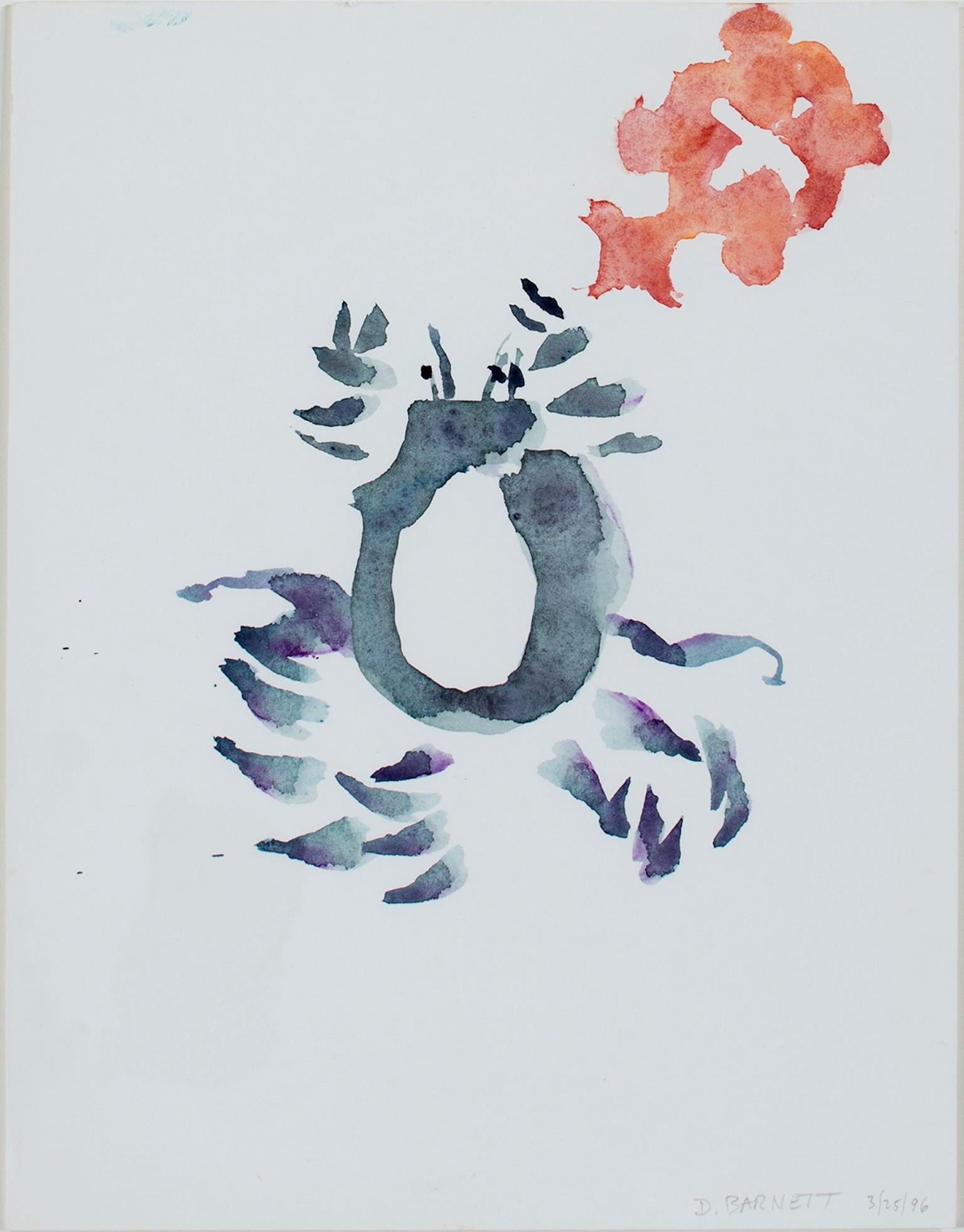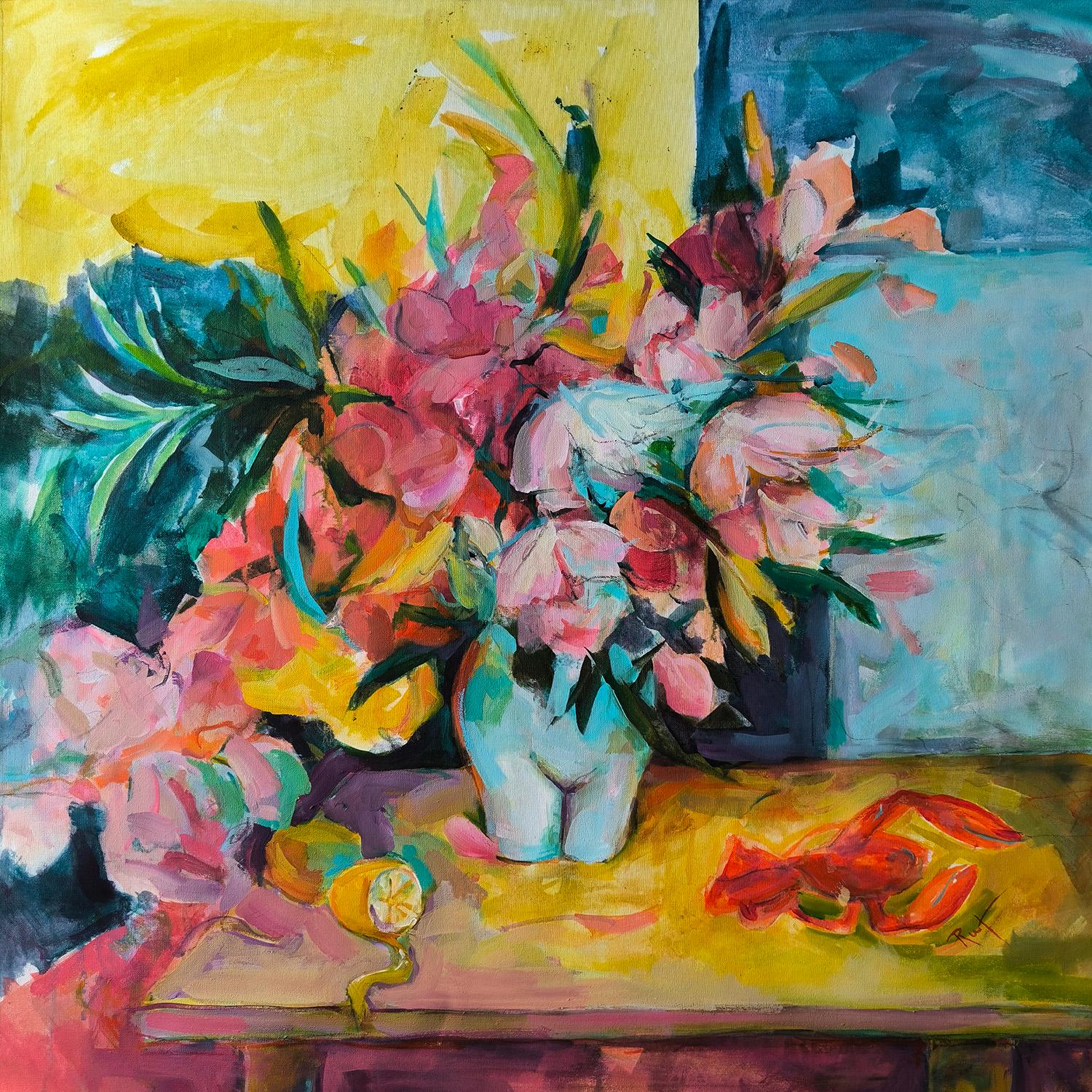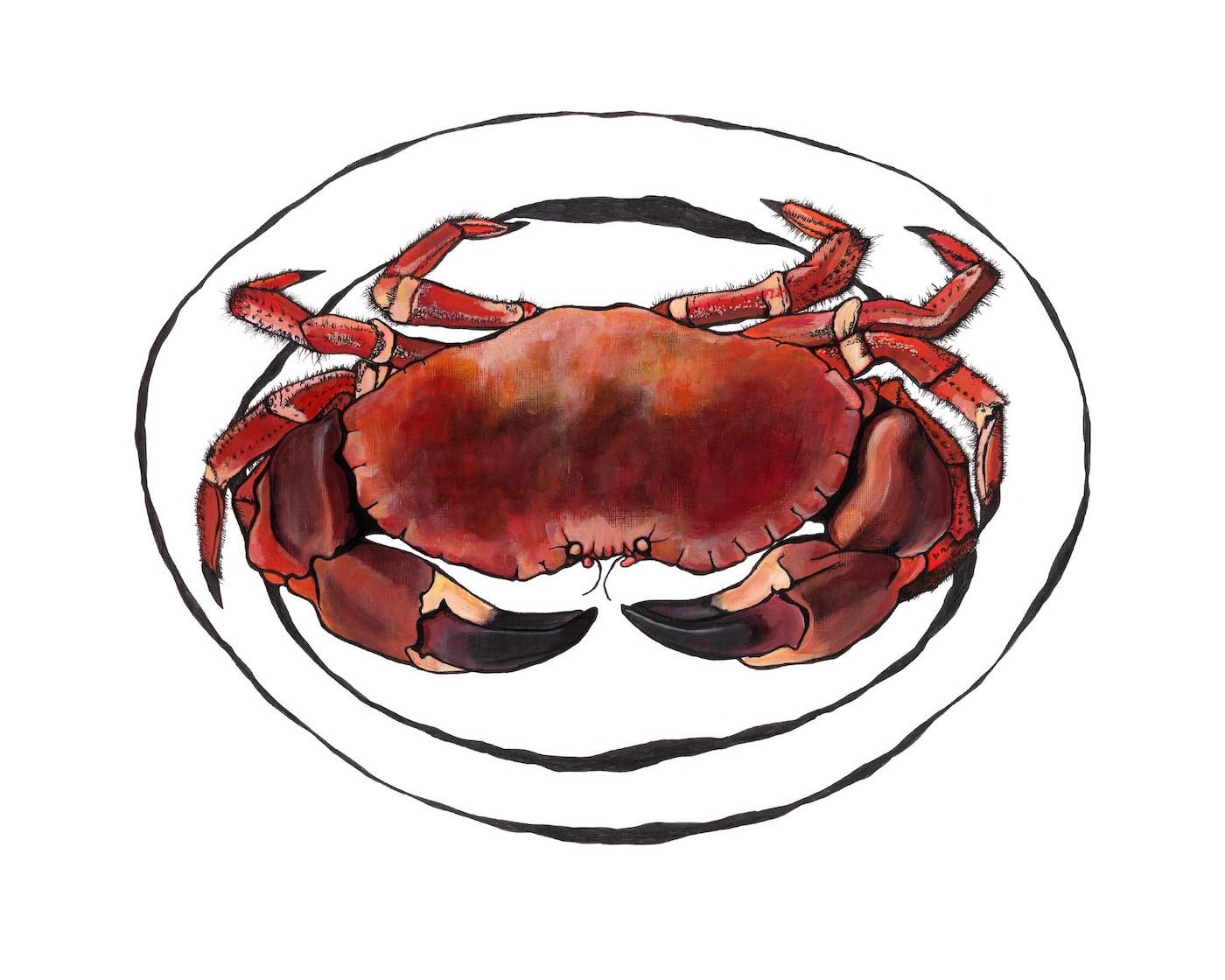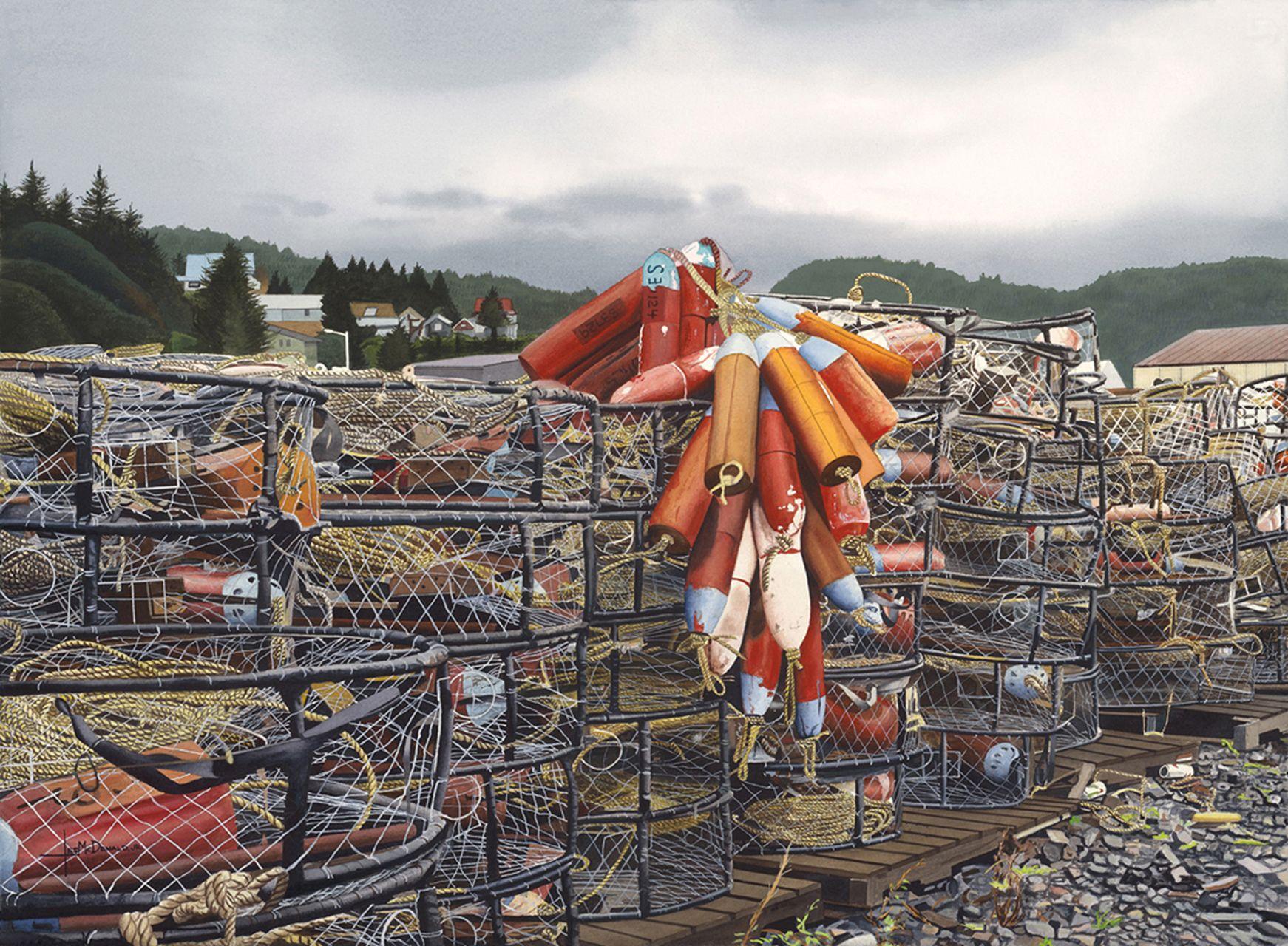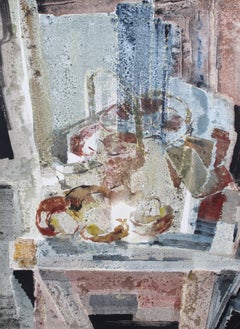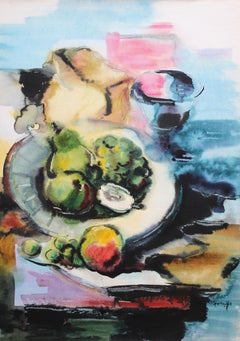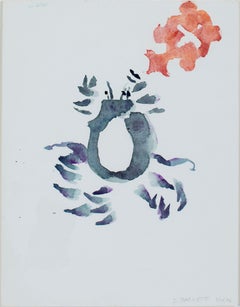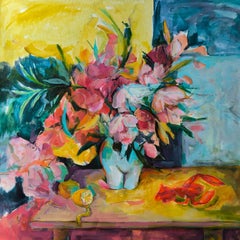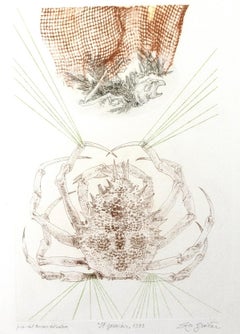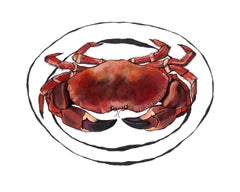Items Similar to Crab. 1971, watercolor on paper, 63 x 69, 3 cm
Want more images or videos?
Request additional images or videos from the seller
1 of 19
Janis BrekteCrab. 1971, watercolor on paper, 63 x 69, 3 cm1971
1971
$1,740.13
£1,288.56
€1,460
CA$2,392.94
A$2,661.56
CHF 1,393.01
MX$32,462.30
NOK 17,503.62
SEK 16,464.42
DKK 11,115.43
About the Item
Crab. 1971, watercolor on paper, 63x69,3 cm
Underwater world
Janis Brekte (1920.15.VIII – 1985.27.XII)
Janis Brekte his first artistic education got in drawing courses of K. Brencens (1936 – 39).
He studied in Latvia Art academy (1940 – 48) and his pedagogues were L. Svemps, K. Miesnieks and N. Breikss.
Artist took part in exhibitions since 1943.
Most important personal exhibitions were organized in Riga (1977, 1980), Jelgava (1981).
Memorial exhibitions – in Cesis (1986) and Riga (1991, 1992).
J. Brekte was a member of Artists Union (since 1950).
In 1981 he got a title of rich of merits employee of art in Latvia Republic of Soviet Union.
Artist was one of the most popular and prolific aquarelle master of his time.
- Creator:Janis Brekte (1920 - 1985, Latvian)
- Creation Year:1971
- Dimensions:Height: 24.81 in (63 cm)Width: 27.29 in (69.3 cm)Depth: 0.04 in (1 mm)
- Medium:
- Movement & Style:
- Period:
- Condition:
- Gallery Location:Riga, LV
- Reference Number:1stDibs: LU1437214438392
Janis Brekte (1920.15.VIII – 1985.27.XII) Janis Brekte his first artistic education got in drawing courses of K. Brencens (1936 – 39). He studied in Latvia Art academy (1940 – 48) and his pedagogues were L. Svemps, K. Miesnieks and N. Breikss. Artist took part in exhibitions since 1943. Most important personal exhibitions were organized in Riga (1977, 1980), Jelgava (1981).
Memorial exhibitions – in Cesis (1986) and Riga (1991, 1992). J. Brekte was a member of Artists Union (since 1950). In 1981 he got a title of rich of merits employee of art in Latvia Republic of Soviet Union. Artist was one of the most popular and prolific aquarelle master of his time.
About the Seller
5.0
Gold Seller
Premium sellers maintaining a 4.3+ rating and 24-hour response times
Established in 2002
1stDibs seller since 2020
197 sales on 1stDibs
Typical response time: 12 hours
- ShippingRetrieving quote...Shipping from: Riga, Latvia
- Return Policy
Authenticity Guarantee
In the unlikely event there’s an issue with an item’s authenticity, contact us within 1 year for a full refund. DetailsMoney-Back Guarantee
If your item is not as described, is damaged in transit, or does not arrive, contact us within 7 days for a full refund. Details24-Hour Cancellation
You have a 24-hour grace period in which to reconsider your purchase, with no questions asked.Vetted Professional Sellers
Our world-class sellers must adhere to strict standards for service and quality, maintaining the integrity of our listings.Price-Match Guarantee
If you find that a seller listed the same item for a lower price elsewhere, we’ll match it.Trusted Global Delivery
Our best-in-class carrier network provides specialized shipping options worldwide, including custom delivery.More From This Seller
View AllMushrooms with a basket. 1978, watercolor on paper, 75x55 cm
Located in Riga, LV
Mushrooms with a basket. 1978, watercolor on paper, 75x55 cm
Jekabs Arturs Springis
(1907– 2004) Painter, Latvia
1924 – 1927 – he learned at Aizpute Secondary School
1927 – 1930 ...
Category
1970s Impressionist Still-life Drawings and Watercolors
Materials
Paper, Watercolor
Still life with fruits. 1970's, watercolor on paper, 77x55 cm
Located in Riga, LV
Still life with fruits. 1970's, watercolor on paper, 77x55 cm
Jekabs Arturs Springis
(1907– 2004) Painter, Latvia
1924 – 1927 – he learned at Aizpute Secondary School
1927 – 1930...
Category
1970s Impressionist Still-life Drawings and Watercolors
Materials
Paper, Watercolor
Still Life with eelpout. 1979, watercolor on paper, 75x55 cm
Located in Riga, LV
Still Life with eelpout. 1979, watercolor on paper, 75x55 cm
Jekabs Arturs Springis
(1907– 2004) Painter, Latvia
1924 – 1927 – he learned at Aizpute Secondary School
1927 – 1930 ...
Category
1970s Impressionist Still-life Drawings and Watercolors
Materials
Paper, Watercolor
At the sea. 2020, Watercolor, paper, 61 x 62 cm
By Zigmunds Snore
Located in Riga, LV
At the sea. 2020, Watercolor, paper, 62,5 x 85 cm
Zigmunds Šņore was born in 1942 in Latvia. His works has been exhibited since 1969 and are held in private collections in Latvia, ...
Category
2010s Realist Landscape Drawings and Watercolors
Materials
Paper, Watercolor
$667 Sale Price
20% Off
Composition. May 27. 1992, watercolor on paper, 73x48 cm
Located in Riga, LV
Composition. May 27. 1992, watercolor on paper, 73x48 cm
Jekabs Arturs Springis
(1907– 2004) Painter, Latvia
1924 – 1927 – he learned at Aizpute Secondary School
1927 – 1930 – le...
Category
1990s Impressionist Still-life Drawings and Watercolors
Materials
Paper, Watercolor
Still life with a basket 1970's, watercolor on paper, 76x55 cm
Located in Riga, LV
Still life with a basket 1970's, watercolor on paper, 76x55 cm
Jekabs Arturs Springis
(1907– 2004) Painter, Latvia
1924 – 1927 – he learned at Aizpute Secondary School
1927 – 19...
Category
1970s Impressionist Still-life Drawings and Watercolors
Materials
Paper, Watercolor
You May Also Like
"Morph Dog Meets Sand Crab- Tete-a-Tete, " Original Watercolor by David Barnett
By David Barnett
Located in Milwaukee, WI
"Morph Dog Meets Sand Crab-Tête-à-Tête" is an original watercolor painting by David Barnett, signed in the lower right corner. This minimalist, abstract image features a dog and crab...
Category
1990s Contemporary Abstract Drawings and Watercolors
Materials
Watercolor
Still Life with Crab
Located in Zofingen, AG
The painting “Still Life with Crab” combines elements of piquancy and intrigue. The central place is occupied by a vase of flowers, depicted in the fo...
Category
2010s Modern Portrait Drawings and Watercolors
Materials
Canvas, Acrylic
The Crab - Etching by Leo Guida - 1973
By Leo Guida
Located in Roma, IT
The Crab is an Contemporary artwork realized in 1973 by the italian artist Leo Guida.
Original mixed colored etching and aquatint
Hand signed, titled and dated on the lower right m...
Category
1970s Contemporary Figurative Prints
Materials
Etching
Crab, Lucy Routh, Original painting, Animal art for sale, illustrative art
Located in Deddington, GB
Crab by Lucy Routh
Limited edition print and hand signed by the artist
Edition size for this print is 100.
Image size: H:50cm x W:60cm
Completed size of unframed work: H:50cm x W:6...
Category
21st Century and Contemporary Folk Art Animal Prints
Materials
Paper, Giclée
Alaska Crab Traps, Painting, Watercolor on Watercolor Paper
By Leslie McDonald Jr
Located in Yardley, PA
Original watercolor from a photo I took in Cordova Harbor, Alaska. To date, I have won 6 awards - Including the American Watercolor Society International Show in New York 2016. 3rd...
Category
2010s Realist Drawings and Watercolor Paintings
Materials
Watercolor
1970's French Oil Painting Crab & Fish on Kitchen Table ideal Fish Restaurant!
Located in Cirencester, Gloucestershire
Fish Supper
signed by Georges Bordonave (French contemporary)
dated 1978
oil painting on board, unframed
board: 17 x 20 inches
condition: very good
provenance: from a large private c...
Category
Late 20th Century Impressionist Animal Paintings
Materials
Oil
